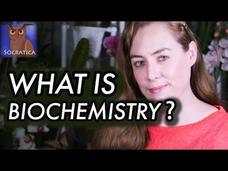Science360
Sucrose molecular structure - Sweet Side of Chemistry
Sucrose is table sugar—that ubiquitous sweet white crystal that sweetens our tea, coffee and apple pies, yet is also the villain blamed for tooth decay and other health issues. Through its Biological Sciences Directorate, NSF has funded...
Science360
Lactose molecular structure - Sweet Side of Chemistry
One of milk’s two sugars, lactose is not digestible in those lacking sufficient levels of lactase, which allows the body to metabolize that sugar. Certain parts of the world are reported to have higher incidences of lactose intolerance....
Science360
Steviol molecular structure - Sweet Side of Chemistry
Responsible for the sweet tasting leaves of the Stevia plant, steviol glycosides have become popularized as a no-cal alternative to sugar. With funding from NSF’s Mathematical and Physical Sciences Directorate, R. Graham Cooks at Purdue...
SciShow
How Did You Get Here?! (Unexpected Ways Species Travel the World)
Sometimes, species end up in places we wouldn't expect, like when the same or very similar species end up on opposite parts of the globe. It's called disjunct distribution, and here are 6 ways that it can happen.
Curated Video
Liquid Nitrogen Demos
We look at how different materials change when they are exposed to liquid nitrogen. Flowers become frozen and stiff and the petals snap. A banana hardens and is strong enough to be used as a hammer and a squash ball becomes very brittle...
Curated Video
Solving Linear Equations with Rational Numbers: Fractions and Decimals
In this video, the teacher explains how to solve linear equations that involve both fractions and decimals. They demonstrate the process of converting fractions and mixed numbers to decimals, and then show different methods for solving...
Catalyst University
Biotechniques | Principles of Gel Extraction
As always, the steps of a Gel Extraction depend on your specific lab and protocol. This vide will give you a general idea regarding when one would utilize a gel extraction and the general steps.
Curated Video
Elements vs Alloys
We compare melting points of lead and tin to the melting point of their alloy, solder. By timing how long it takes samples of each to melt, we discover that the melting point of solder is actually lower than those of both lead and tin....
TED Talks
TED: The line between life and not-life | Martin Hanczyc
In his lab, Martin Hanczyc makes "protocells," experimental blobs of chemicals that behave like living cells. His work demonstrates how life might have first occurred on Earth ... and perhaps elsewhere too.
The Royal Institution
Jim Al-Khalili - Quantum Life: How Physics Can Revolutionise Biology
In this Friday Evening Discourse at the Royal Institution, Professor Jim Al-Khalili explores how the mysteries of quantum theory might be observable at the biological level. Although many examples can be found in the scientific...
Curated Video
Exploring the World of Subatomic Science: The Impact of Synchrotron Research
The Desbury Laboratory in England houses a groundbreaking synchrotron particle accelerator, enabling researchers to uncover atomic and molecular structures using high-energy light. Originally focused on high-energy physics, the lab's...
Next Animation Studio
Spray-painting asteroids could prevent Earth collision
Asteroids on a collision course with Earth could be rerouted by spray painting them with a thin layer of paint, a Texas A&M University professor says. Dave Hyland, an aerospace and physics professor at Texas A&M, says an asteroid...
Science360
How does this jellyfish sting without touching you?
In warm coastal waters around the world, swimmers can often spot large groups of jellyfish pulsing rhythmically on the seafloor. Unless properly prepared with protective clothing, it is best to steer clear of areas that Cassiopea, or...
GPB Television
Chemistry 502: The World of Atoms is Not Enough – Bonding Part II
"The name is Bond. James Bond." Or is that "Chemical Bond?" Assign the viewing of the video as homework, and then have your chemists come to class to practice drawing electron dot diagrams and Lewis structures with the several bonus...
Crash Course
Water - Liquid Awesome
If H2O is water and H2O2 is hydrogen peroxide, what is H2O4? Drinking, bathing, and cooking among others. Viewers of a short video explore water through its molecular structure, its ability to stick to itself through adhesion (cohesion...
Socratica
Chemistry: What Is an Ionic Bond?
Teach your class all they want to know about ionic bonds. An engaging video, part of the Socratica "Chemistry Lessons" playlist, explains what ionic bonds are and how they form. It describes multiple examples of ionic bonds and...
Howard Hughes Medical Institute
DNA Replication (Basic Detail)
Animations are powerful tools for seeing things the eye cannot! A thorough lesson demonstration models DNA replication with a 3-D animation. The video demonstrates how enzymes first separate the original DNA and then copy the resulting...
Socratica
What Is Biochemistry?
Watch as chemistry comes alive! Socratica's biology playlist kicks off with a simple video detailing the principle components of biochemistry. Content includes carbohydrates, proteins, and nucleic acids. The narrator describes each class...






